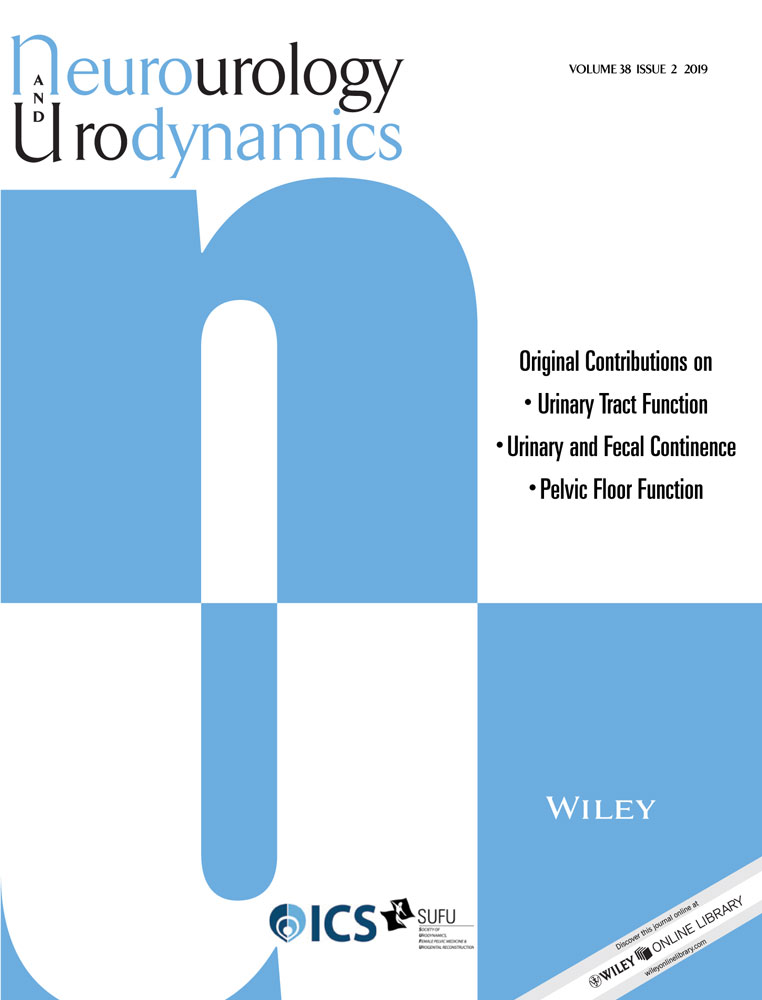Effects of bladder shape on accuracy of measurement of bladder volume using portable ultrasound scanner and development of correction method
Abstract
Aims
To compare the accuracy of using a bladder scanner to measure bladder volume through intermittent catheterization (IC) in patients and to introduce the Bladder Deformation Index (BDI) to develop a correction method.
Methods
Bladder volume was assessed by a nurse with the scanner. A second nurse catheterized the patient's bladder. A third nurse measured the urine volume in a 500-mL or 1000-mL graduated cylinder.
Results
Sixty one patients were included and 590 pairs of data were obtained. The mean bladder volume measured using a scanner and IC was (332.3 ± 156.1) mL and (339.1 ± 158.8) mL. The mean absolute difference was 30.8 mL. The correlation coefficient was 0.929. Patients were classified into 2 groups depending on whether they had undergone augmentation cystoplasty. The mean absolute difference was 109.2 and 20.4 mL. The correlation coefficient was 0.712 and 0.981. According to the BDI, bladders can be classified into 3 groups. The mean absolute difference was 21.9, 60.4, and 109.4 mL. The correlation coefficient was 0.970, 0.839, and 0.783. The linear regression equations of Grade I and Grade II were Y = 1.11X + 3.1 and Y = 0.76X + 161.5.
Conclusions
The results showed that bladder shape plays a critical role in accuracy which is inversely associated with BDI. This degree of accuracy is sufficient; especially measurement adjusted using the linear regression equation in patients with high BDI. However, although the preliminary results of the study are promising, a large-scale prospective study should be needed to address the validation of the data in the future.
CONFLICT OF INTEREST
The authors declare no conflict of interest.




